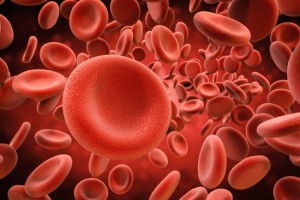Infants and children 9 months to 4 years of age with nutritional iron-deficiency anemia had a greater increase in hemoglobin concentration with ferrous sulfate than with iron-polysaccharide complexes at 12 weeks, according to a randomized clinical trial published in JAMA. Big.

Iron-deficiency anaemia in infants and young children – most commonly caused by excessive consumption of cow’s milk or prolonged breastfeeding without proper iron supplementation – affected more than 1 billion people globally in 2010, 3% of whom were 1 to 2 years old Children in America.It usually occurs in rapidly growing children and can cause irritability, malaise, pica, and short- and long-term neurodevelopmental disorders.
Ferrous sulfate, an iron salt, is the standard treatment for nutritional iron-deficiency anemia.However, an iron-polysaccharide complex containing ferric iron (NovaFerrum, Gensavis Pharmaceuticals) can be used as an alternative because it may improve tolerance and taste.
”Treatment failure is common due to medication non-adherence, adverse effects associated with overdose, and a lack of evidence-based management guidelines,” said Jacquelyn M. Powers, MD, MS, School of Medicine, Baylor Assistant Professor of Pediatrics and Hematology/Oncology, and colleagues wrote.”Few randomized clinical trials inform iron formulation selection, dosing regimen, and duration of treatment, regardless of the underlying etiology, age, or sex of affected individuals.”

Powers and colleagues evaluated iron-polysaccharide complexes in 80 infants and children 9 to 48 months (median age, 22 months; 55% male; 61% white Hispanic) with nutritional iron deficiency anemia Is it more effective than ferrous sulfate to increase hemoglobin concentration.
Between September 2013 and November 2015, the researchers randomly assigned the children to receive 3 mg/kg of elemental iron once daily as ferrous sulfate drops (n = 40) or iron-polysaccharide complex drops (n = 40) = 40) for 12 weeks.
Parents or caregivers were instructed to administer the daily dose at bedtime, to avoid mixing the dose with any food or drink, and to avoid milk for 1 hour after administration of study drug.The researchers also recommend that parents and caregivers limit milk intake to a maximum of 600ml per day.

Change in hemoglobin at 12 weeks served as the primary endpoint.Secondary endpoints included complete resolution of iron deficiency anemia, changes in serum ferritin levels and total iron-binding capacity, and adverse effects.
Fifty-nine participants completed the trial, 28 from the ferrous sulfate group and 31 from the iron-polysaccharide complex group.
From baseline to week 12, mean hemoglobin increased from 7.9 g/dL to 11.9 g/dL in the ferrous sulfate group and from 7.7 g/dL to 11.1 g/dL in the iron-polysaccharide complex group, a greater difference of 1 g /dL (95% CI, 0.4-1.6; P < .001) with ferrous sulfate.
Compared with the iron polysaccharide group, infants and children in the ferrous sulfate group had higher rates of complete remission of iron deficiency anemia (29% vs 6%; P = .04).The median serum ferritin level increased from 3 ng/mL to 15.6 ng/mL in the ferrous sulfate group and from 2 ng/mL to 7.5 ng/mL in the iron-polysaccharide complex group, with a greater difference of 10.2 ng/mL (95 ng/mL). % CI, 6.2-14.1; P < .001) with ferrous sulfate.
The mean total iron-binding capacity decreased from 501 µg/dL to 389 µg/dL, while ferrous sulfate decreased from 506 µg/dL to 417 µg/dL, and the iron-polysaccharide complex was –50 µg/dL (95% CI, –86 to –14; P < .001) and ferrous sulfate.
Diarrhea was more common with iron-polysaccharide complexes than with ferrous sulfate (58% vs 35%; P = .04).
The researchers noted that 50 percent of parents and caregivers reported difficulty administering the iron-polysaccharide complex, compared with 65 percent of the ferrous sulfate group.
Limitations of the study included that it was conducted at a tertiary care children’s hospital and had a disproportionate proportion of low-income and minority patients with severe anemia, about 23% of whom required blood transfusions prior to enrollment.
”These results should help prompt further clinical trials to evaluate lower or less frequent doses of oral iron,” Powers and colleagues wrote.”Expected outcomes may include improved patient compliance and enhanced iron absorption, resulting in a more favorable hematologic response.” – Chuck Gormley
Disclosure: Gensavis Pharmaceuticals funded this study.The researchers report no relevant financial disclosures.
Post time: Mar-21-2022




